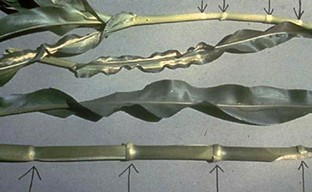Last spring there was a lot of corn that had some nutrient deficiencies, mainly sulfur. However, some of the tissue tests which I had run came back deficient in Zinc. After doing some research on this matter, I found that 30-50% of soil samples in Missouri report a zinc deficiency. Here are five reasons of why we are seeing this:
- Planting earlier, especially into cool and wet soils means immobile nutrients, like zinc, can be less available.
- Coarse textured soils tend to limit zinc uptake.
- High pH soils tend to limit zinc uptake, too.
- Today’s high-performance corn genetics remove up to 27% MORE ZINC than non-rootworm resistant hybrids.
- High yields mean high nutrient removal.
How Much Zinc Does Corn Need?
For a 200-bushel corn crop, total crop usage of zinc is 0.39 lbs./acre. More than half of that – 0.24 lbs./acre – goes into the grain and will be removed the field at harvest.
The role of zinc in the plant
Zinc is an important component of various enzymes that are responsible for driving many metabolic reactions in all crops. Growth and development would stop if specific enzymes were not present in plant tissue. Carbohydrate, protein, and chlorophyll formation is significantly reduced in zinc-deficient plants. Therefore, a constant and continuous supply of zinc is needed for optimum growth and maximum yield.

This young corn plant shows typical zinc deficiency symptoms. Note the broad white stripes on both sides of the midrib of the leaf.

Zinc deficiency creates shortened internodes (top) on the corn stalk. A normal plant (bottom) is shown in contrast to the zinc-deficient plant.
With Crop Choice Starter Fertilizers, we can custom blend EDTA Chelated Zinc to help give your corn crop what it needs, when it needs it. It is a very important micro nutrient! On our own farm, we have seen a yield bump of 8-10 bushels per acre by adding Zinc to our starter. Look at your soil tests, and let us know at SOIL SERVICE, INC if we can help you customize your fertility program.
